This soup is so quintessentially Japanese. Oozing with umami, kenchinjiru is stocked full of vegetables, tofu and konnyaku with a light dashi broth. Perfect for a nourishing lunch or dinner!
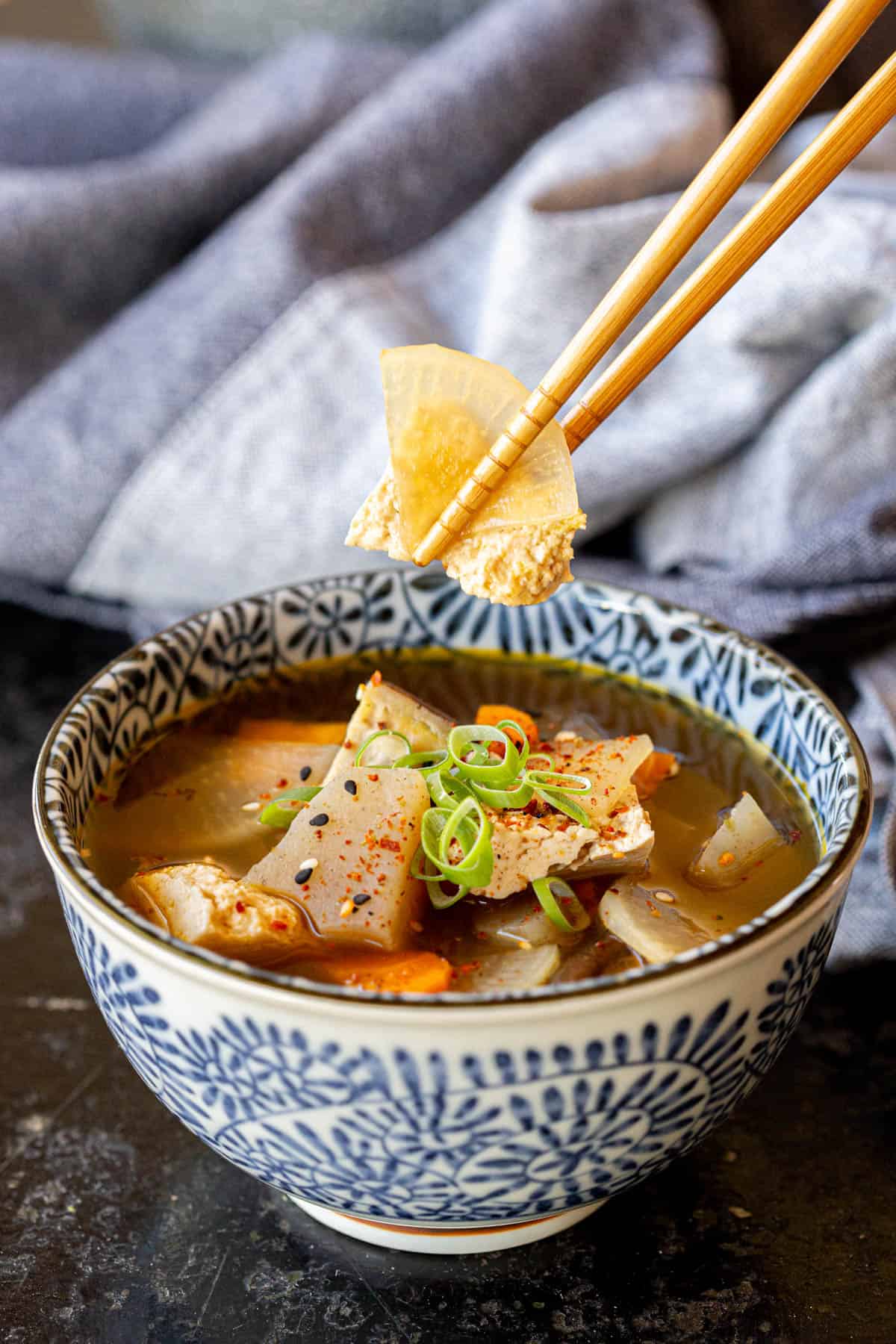
In This Post You’ll Learn
Why We Love This
What a beautiful soup that’s light on the stomach but super filling at the same time!
While the recipe does have a few more traditional Japanese ingredients such as konnyaku, shiitake mushrooms and tofu – everything is easily able to be substituted for what you have available to you. Just adapt and cook!
Related: Japanese Miso Soup / Udon Noodle Soup
Vegetable Ideas to Change Up the Recipe
Use our list below to get your ideas flowing for trying this recipe with different vegetable combinations, depending on what’s in season and what you have on hand.
– Lotus root
– Taro or yam
– Parsnip
– Pumpkin
– Swedes or turnips
– Onion
– Zucchini or squash
– Any mushroom – think enoki, shimeji or even button mushrooms
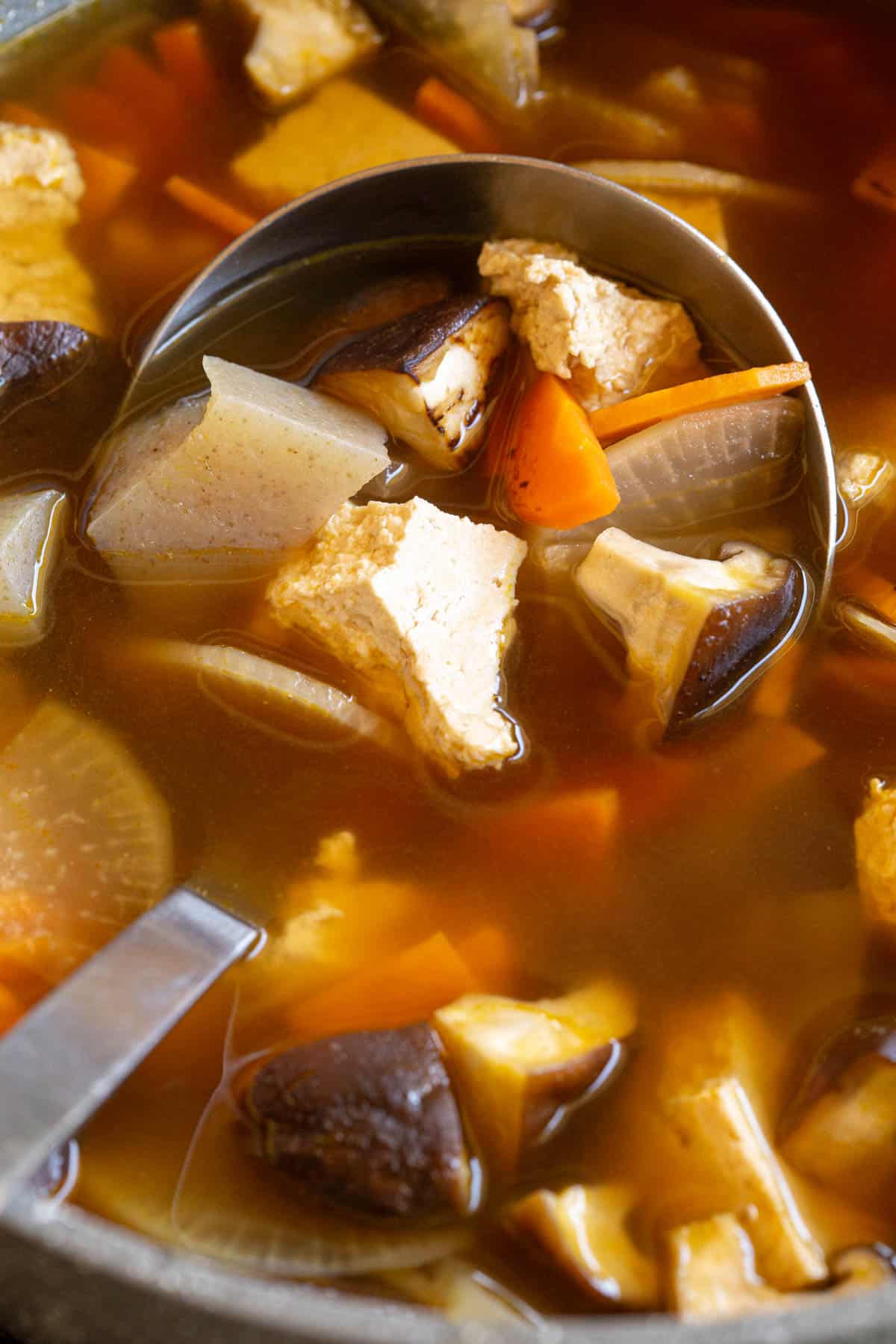
What is Kenchinjiru?
Kenchinjiru is a light Japanese vegetable soup often made with root vegetables, tofu and konnyaku. It’s said to have been popular as part of shojin ryori, or Buddhist vegetarian cuisine. It’s more common to have it made with fish based dashi these days, but you can still make it vegan if you use kombu dashi or shiitake dashi.
It’s now more commonly enjoyed as a regular household soup, or found in little izakayas or small family restaurants throughout Japan.
The smell reminds us of stepping straight into an oden restaurant, as the flavours are about as Japanese as you can get. We call them little bowls of happiness because they’re healthy, and remind us of our second home. ❤️
What You’ll Need
- Root Vegetables – The most common root vegetables in a traditional kenchinjiru are daikon, carrot, taro and gobo / burdock root. Burdock and taro can be hard for us to source though, so we used sweet potato instead.
- For the seasoning – The base is a traditional dashi stock (you can just use powder or sub with vegetable stock in an absolute pinch – this will change the flavour though). Soy sauce, mirin (sub with sugar) and sake (or Chinese cooking wine) bring together the rest of the flavours.
- Tofu – We use firm tofu, it holds it’s shape well and is easy to break off into chunks.
- Konnyaku – Konnyaku is a traditional Japanese ingredient made from a root vegetable and formed into a block. Be aware – it can smell like stinky socks when you open the packet, so that’s why we boil it with some salt and get it ready to take on the yummy flavours of the soup instead!
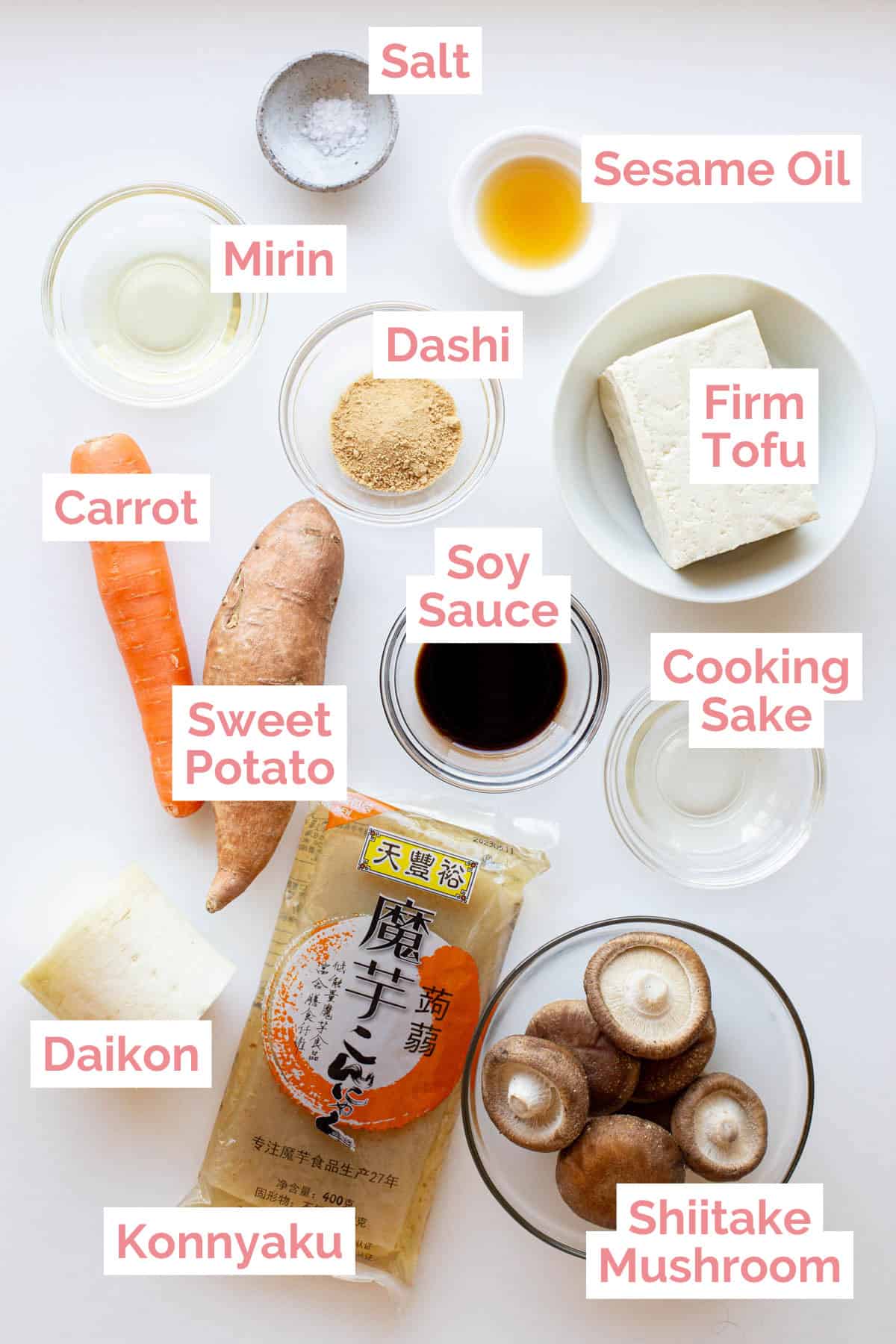
How to Make Japanese Clear Vegetable Soup
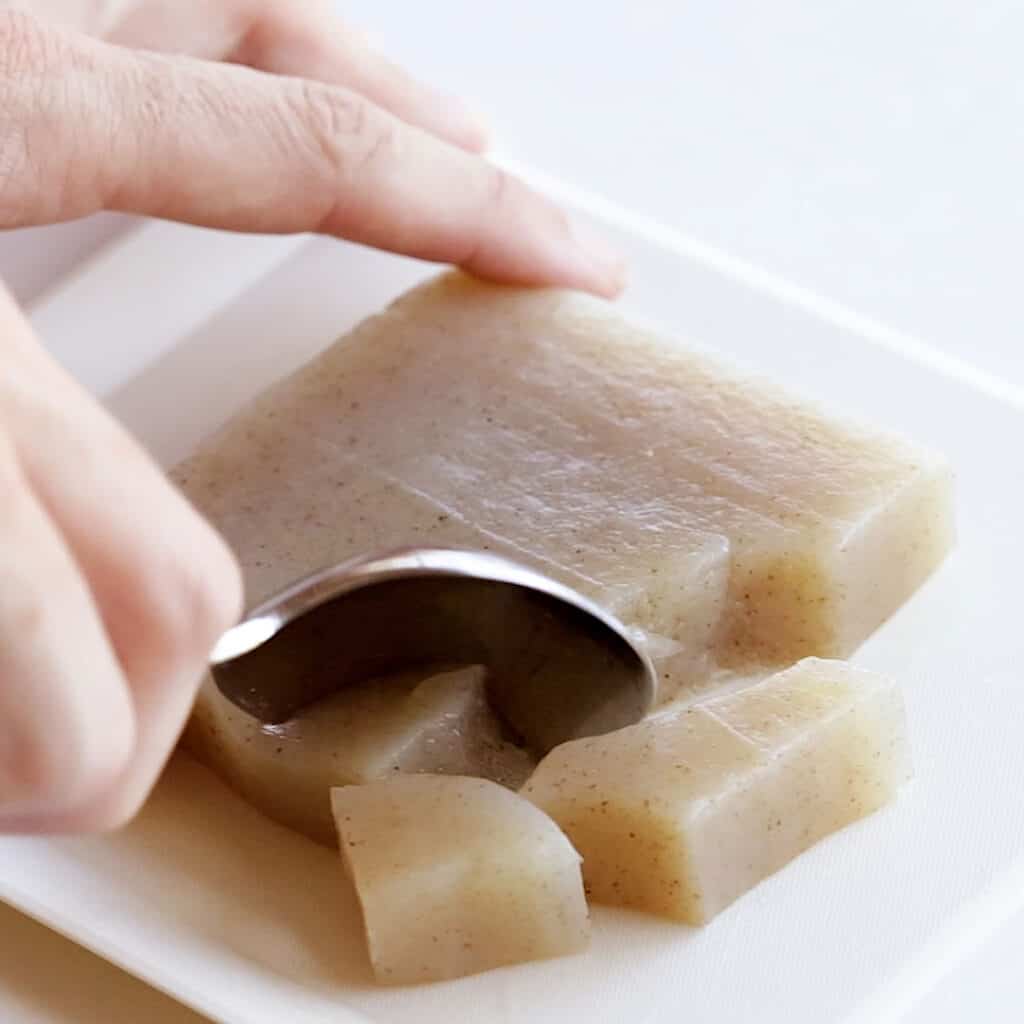
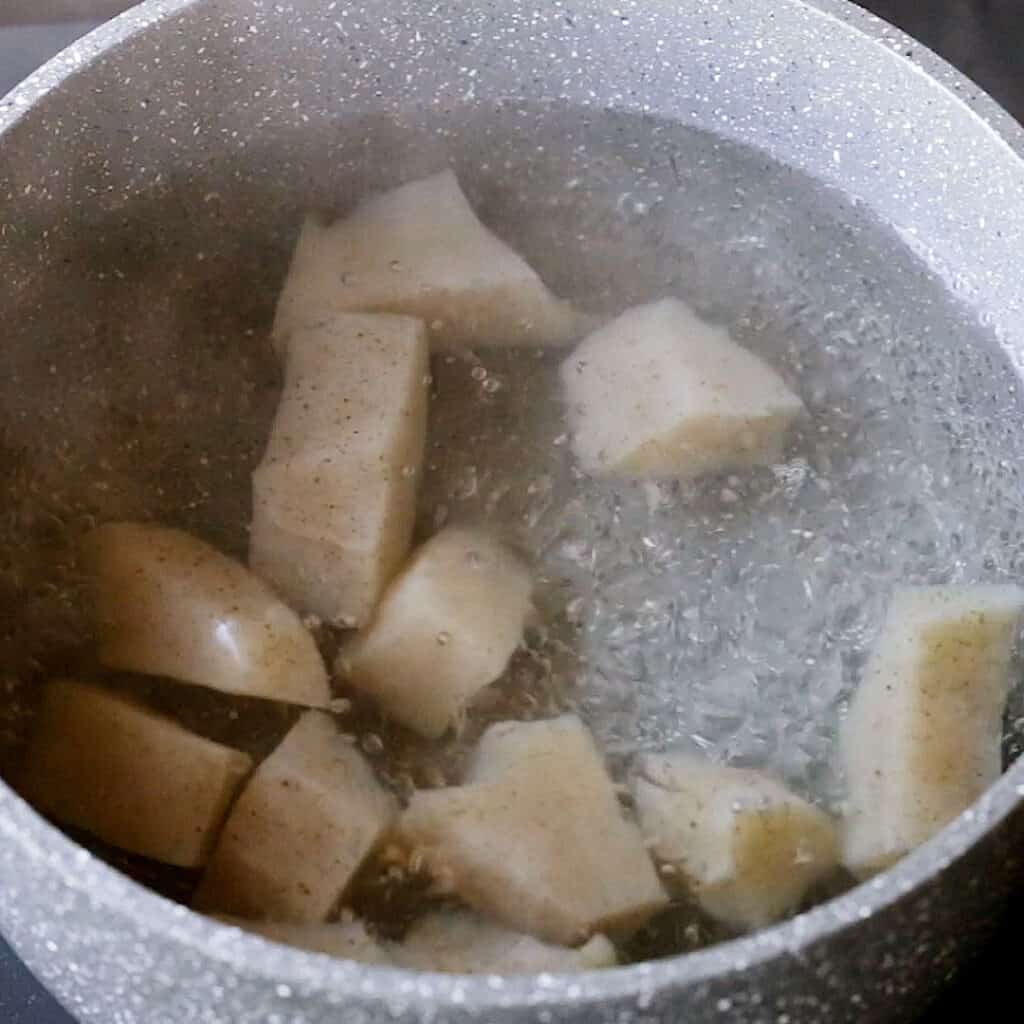
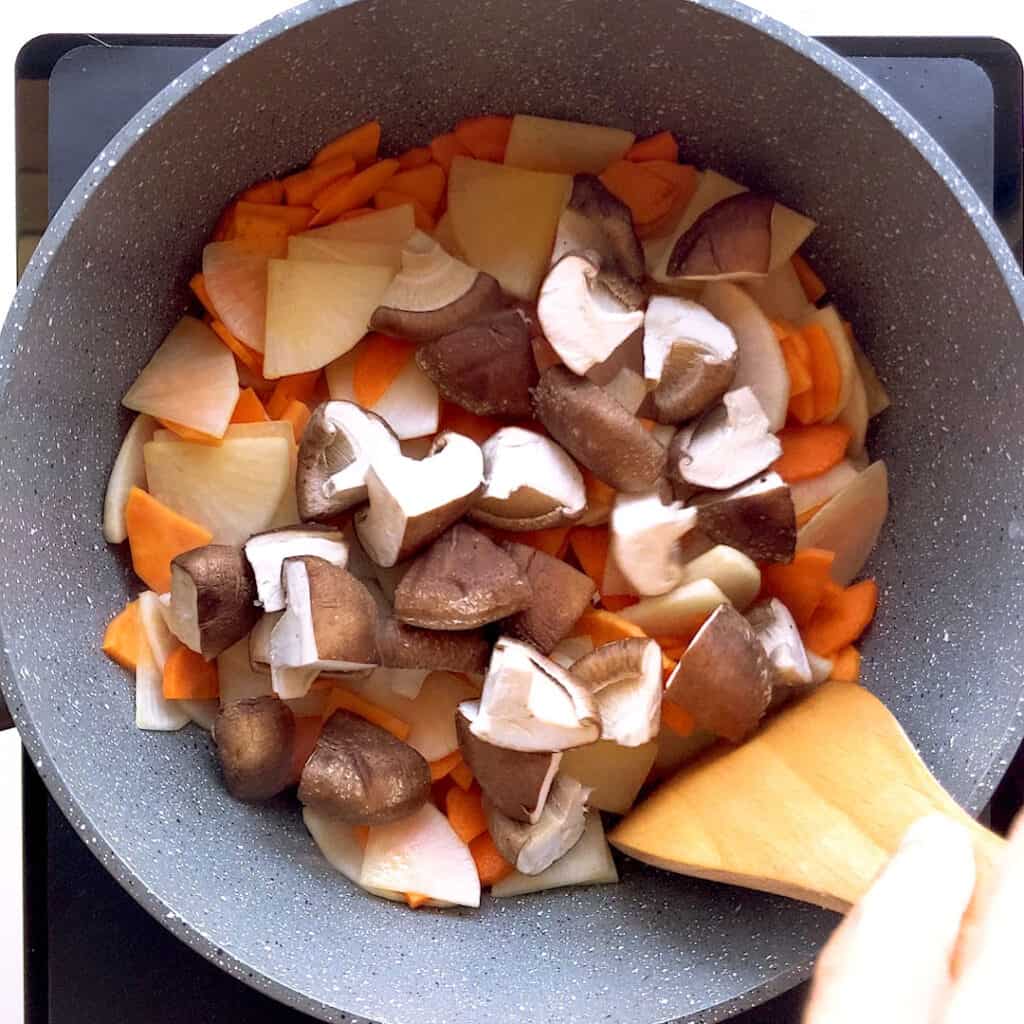
First, gather your ingredients: See recipe card below for measurements.
For the konnyaku
- First we need to prep the konjac / konnyaku block. Using a spoon, break it into odd pieces to allow the edges to soak up the flavour.
- Bring a small saucepan of water to the boil and add in salt. Next, pop in the konnyaku pieces and boil for 2-3 minutes then drain.
For the vegetables
- Pour your sesame oil into a large saucepan over medium heat. Add in the sweet potato, daikon and carrot and fry for around 3 minutes to seal and soften slightly.
- Next add in the shiitake mushrooms and continue frying for 1-2 minutes.
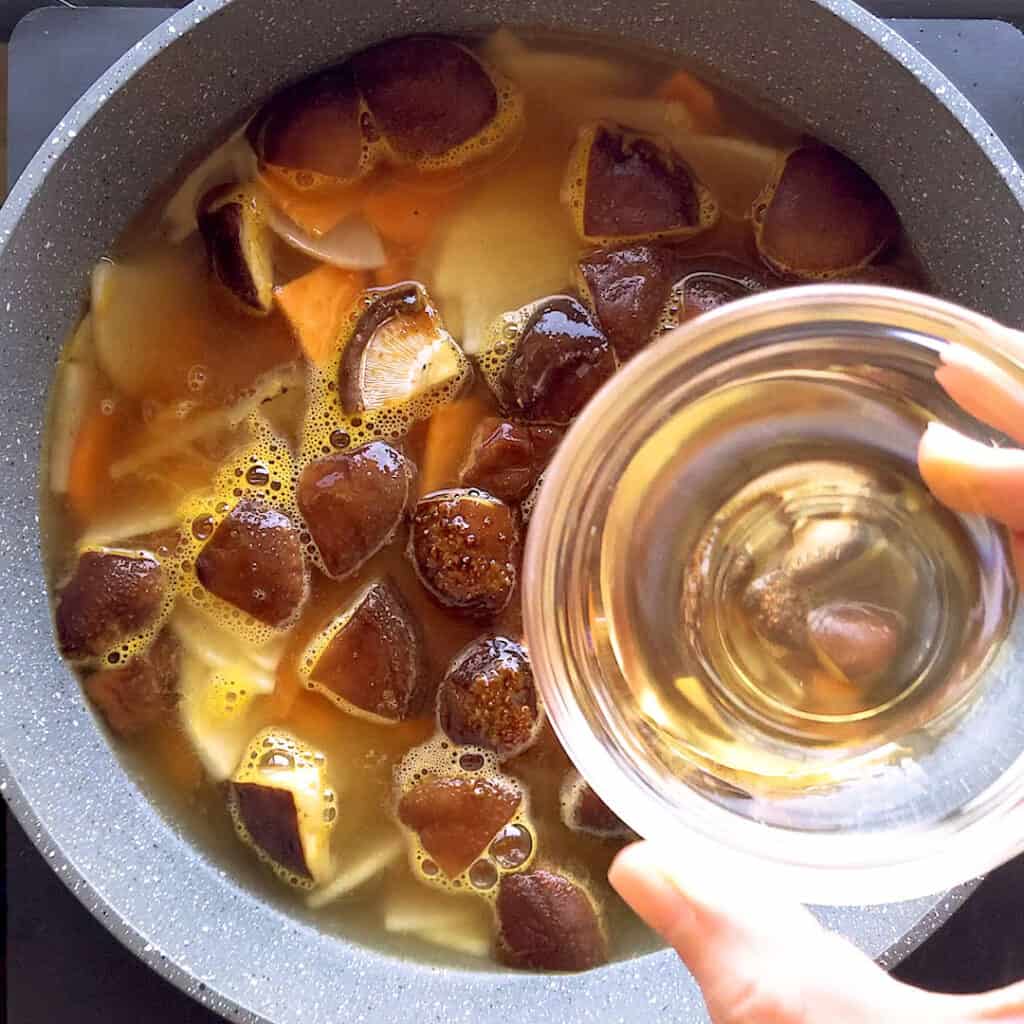
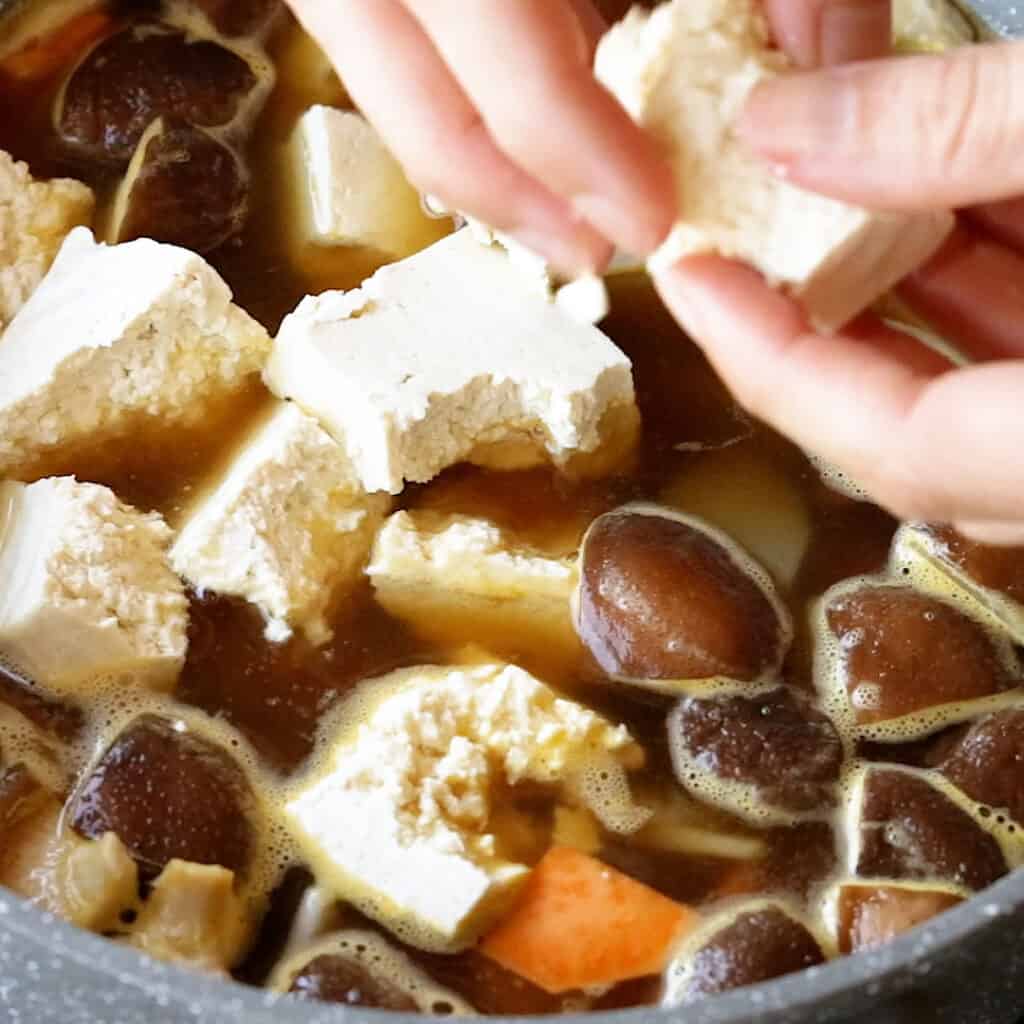
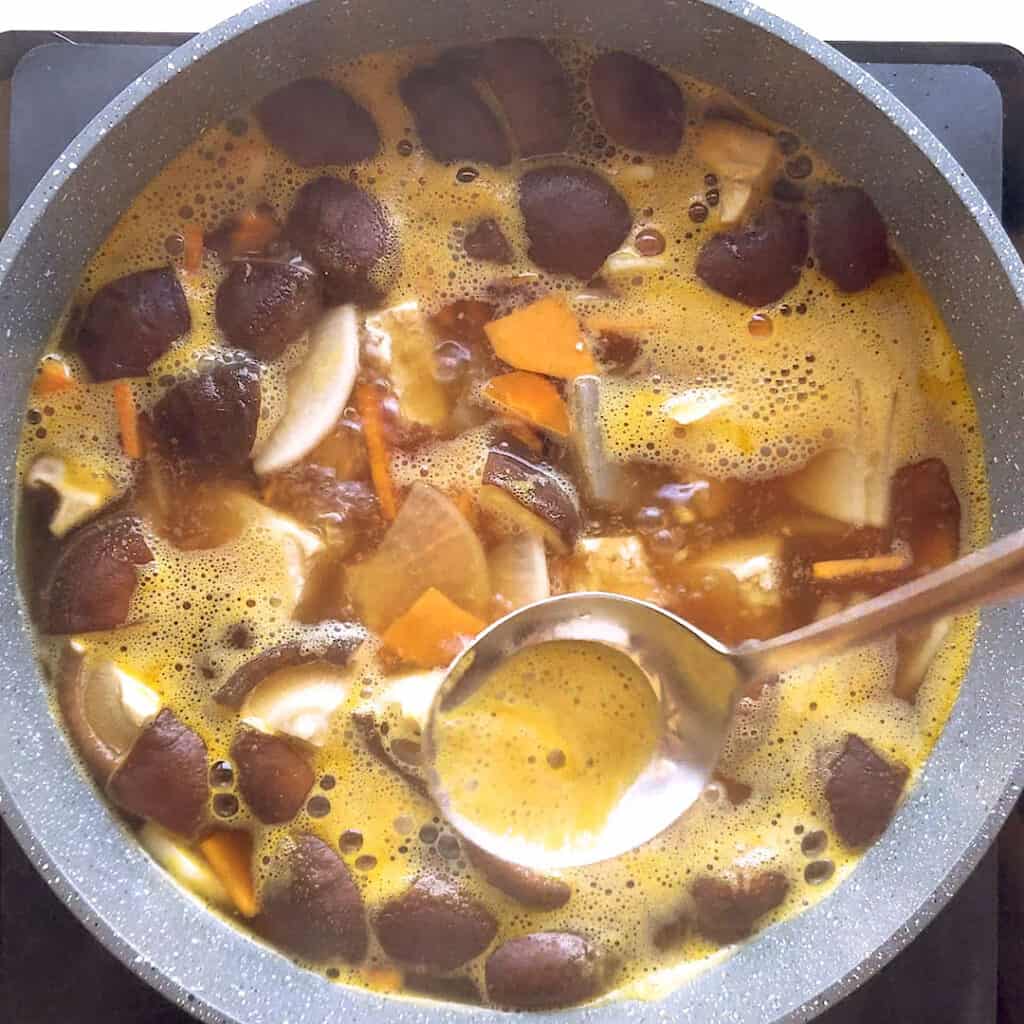
For the soup broth
- Pour in the water over the vegetables, followed by the dashi powder, soy sauce, sake, mirin and optional salt. Give everything a quick stir.
- Now carefully add in the konnyaku, then break up the firm tofu into chunks and add into the soup.
- As it comes to the boil, there may be foam that forms on the top. Scoop off with a spoon for a clearer soup.
- Once boiling, cover with a lid and reduce to a simmer. Cook for 20 minutes or until vegetables are soft.
- Serve with garnishes such as spring onion / green onion, shichimi togarashi, goma shio and / or rayu chilli oil.
Wandercook’s Tips
- Let The Flavours Develop – Cooking the soup the day before and then reheating it the next day will really allow those flavours to soak into the vegetables, tofu and konnyaku.
- Konnyaku – Konnyaku will have the best texture when cooked from boiling water and not in cold water first (then boiled).
Storage, Freezing & Reheating
This soup will store in the fridge for 3-5 days in an airtight container. We don’t recommend freezing. If you really want to freeze it, do it without the tofu and konnyaku then add them in later.
FAQs
Kenchinjiru is known to be light on flavour, we definitely use more than traditional amounts call for, so hopefully there’s enough of a burst of flavour in your bowl. If you’re wanting a lighter taste, you can cut back on the soy sauce and dashi amounts.
The light taste helps to focus on the individual flavours of the vegetables as well.
Make sure to fry the vegetables first in the sesame oil, this helps to seal and hold their edges in the first instance. Then, once you’re cooking the vegetables in the soup, make sure you don’t have the heat up too high – this can make the vegetables bounce into each other and break once they become soft. A medium heat and simmer is all you need.
This is completely normal. It’ll smell like stinky socks or rubbish depending on your senses. The good news is, boiling it helps to remove any smells and it will take on the flavours of the dish – it otherwise does not have a strong taste and is more about the firm jelly-like mouthfeel.
Serving Ideas & Variations
- Make it Vegan – Swap the dashi for shiitake dashi or kombu dashi.
- Add Mustard – Sarah loves adding karashi mustard when she has this soup. Spreading it on the larger pieces of vegetables or tofu, similar to when we eat simmered daikon or oden.
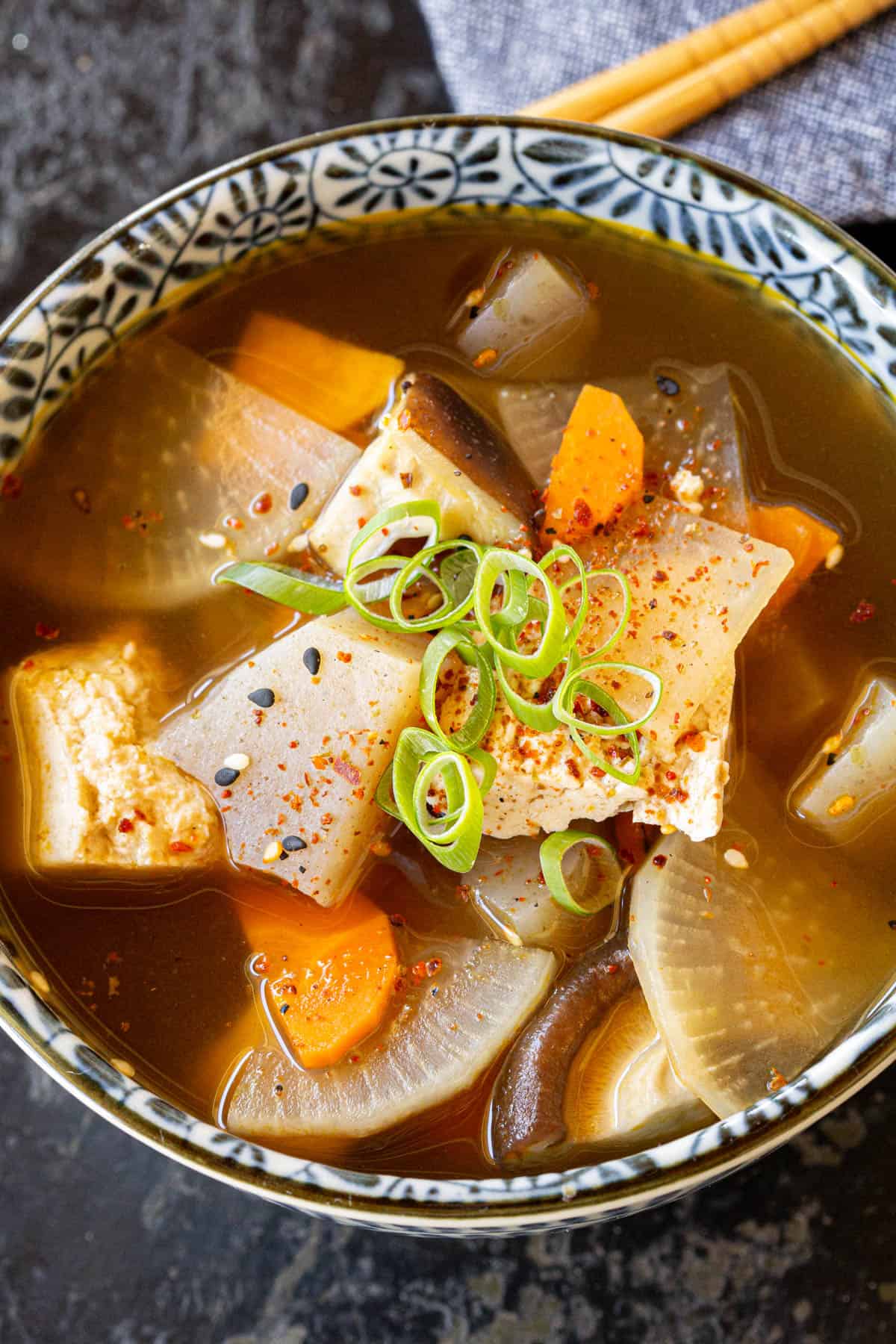
Try these amazing recipes next:
★ Did you make this recipe? Please leave a comment and a star rating below!
Ingredients
For the vegetables
- 200 g konjac / Konnyaku blocks 7 oz
- ¼ tsp salt
- 1 tbsp sesame oil
- 150 g sweet potato 5.2 oz, in place of burdock / gobo
- 200 g daikon 7 oz, quartered, sliced thinly
- 100 g carrot 3.5 oz, sliced into half moons
- 6 shiitake mushrooms quartered, sub shimeji
- 200 g firm tofu 7 oz, torn into chunks
For the soup broth
- 3 cups water 750 ml / 1.58 pt
- 3 tsp dashi powder
- 1 ½ tbsp soy sauce
- 2 tbsp sake
- 2 tbsp mirin
- salt to taste, around ¼ tsp
Garnish ideas
- spring onion / green onion sliced for garnish
- shichimi togarashi
- goma shio
- rayu chilli oil
Instructions
For the konnyaku
- First we need to prep the 200 g konjac / Konnyaku blocks. Using a spoon, break it into odd pieces to allow the edges to soak up the flavour.
- Bring a small saucepan of water to the boil and add in ¼ tsp salt. Next, pop in the konnyaku pieces and boil for 2-3 minutes then drain.
For the vegetables
- Pour your 1 tbsp sesame oil into a large saucepan over medium heat. Add in the 150 g sweet potato, 200 g daikon and 100 g carrot and fry for around 3 minutes to seal and soften slightly.
- Next add in the 6 shiitake mushrooms and continue frying for 1-2 minutes.
For the soup broth
- Pour in the 3 cups water over the vegetables, followed by the 3 tsp dashi powder, 1 ½ tbsp soy sauce, 2 tbsp sake, 2 tbsp mirin and optional salt. Give everything a quick stir.
- Now carefully add in the konnyaku, then break up the 200 g firm tofu into chunks and add into the soup.
- As it comes to the boil, there may be foam that forms on the top. Scoop off with a spoon for a clearer soup.
- Once boiling, cover with a lid and reduce to a simmer. Cook for 20 minutes or until vegetables are soft.
- Serve with garnishes such as spring onion / green onion, shichimi togarashi, goma shio and / or rayu chilli oil.
Video
Recipe Notes
- Let The Flavours Develop – Cooking the soup the day before and then reheating it the next day will really allow those flavours to soak into the vegetables, tofu and konnyaku.
- Konnyaku – Konnyaku will have the best texture when cooked from boiling water and not in cold water first (then boiled).
- Make it Vegan – Swap the dashi for shiitake dashi or kombu dashi.
- Add Mustard – Sarah loves adding karashi mustard when she has this soup. Spreading it on the larger pieces of vegetables or tofu, similar to when we eat simmered daikon or oden.
Nutrition
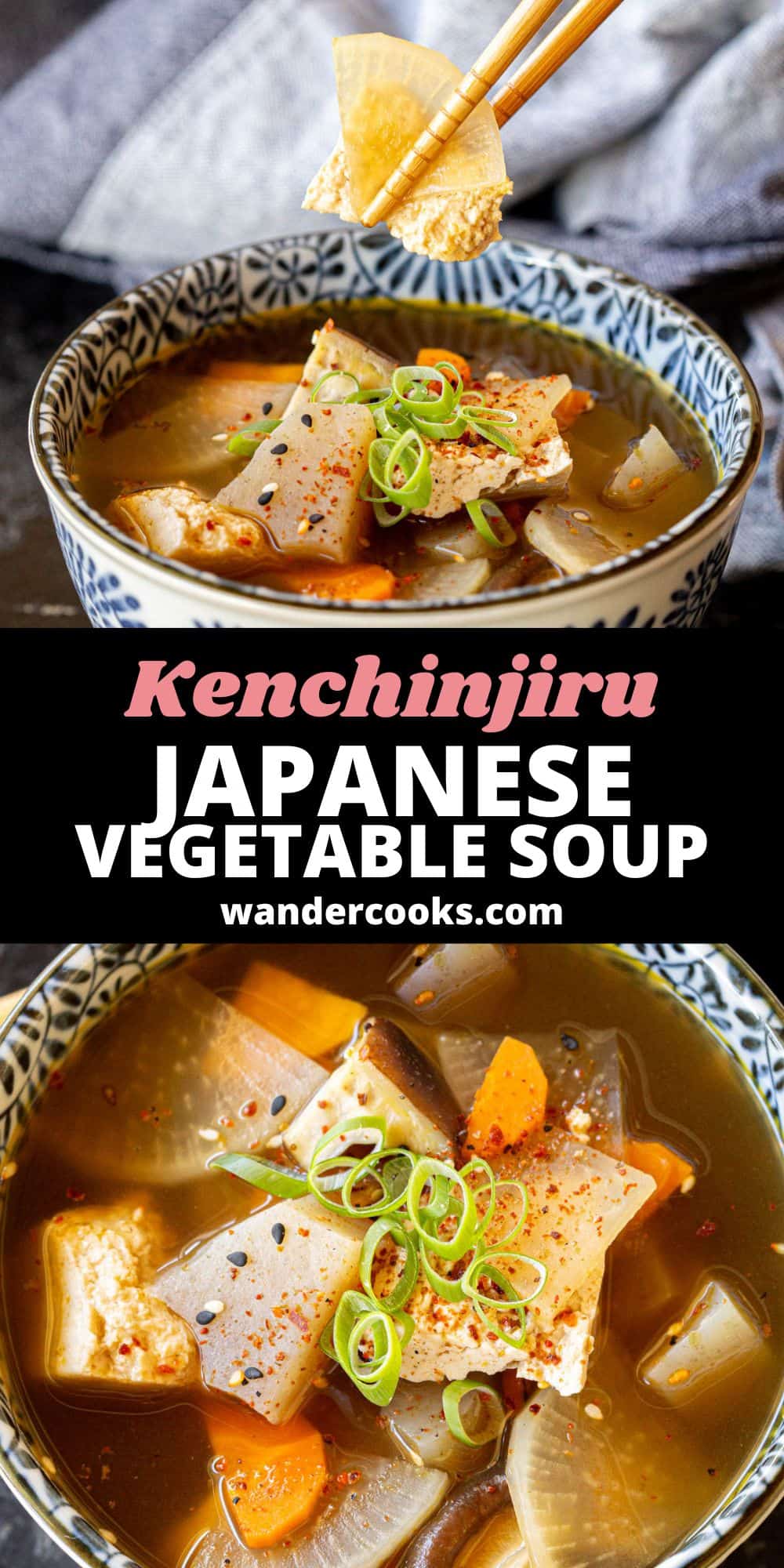

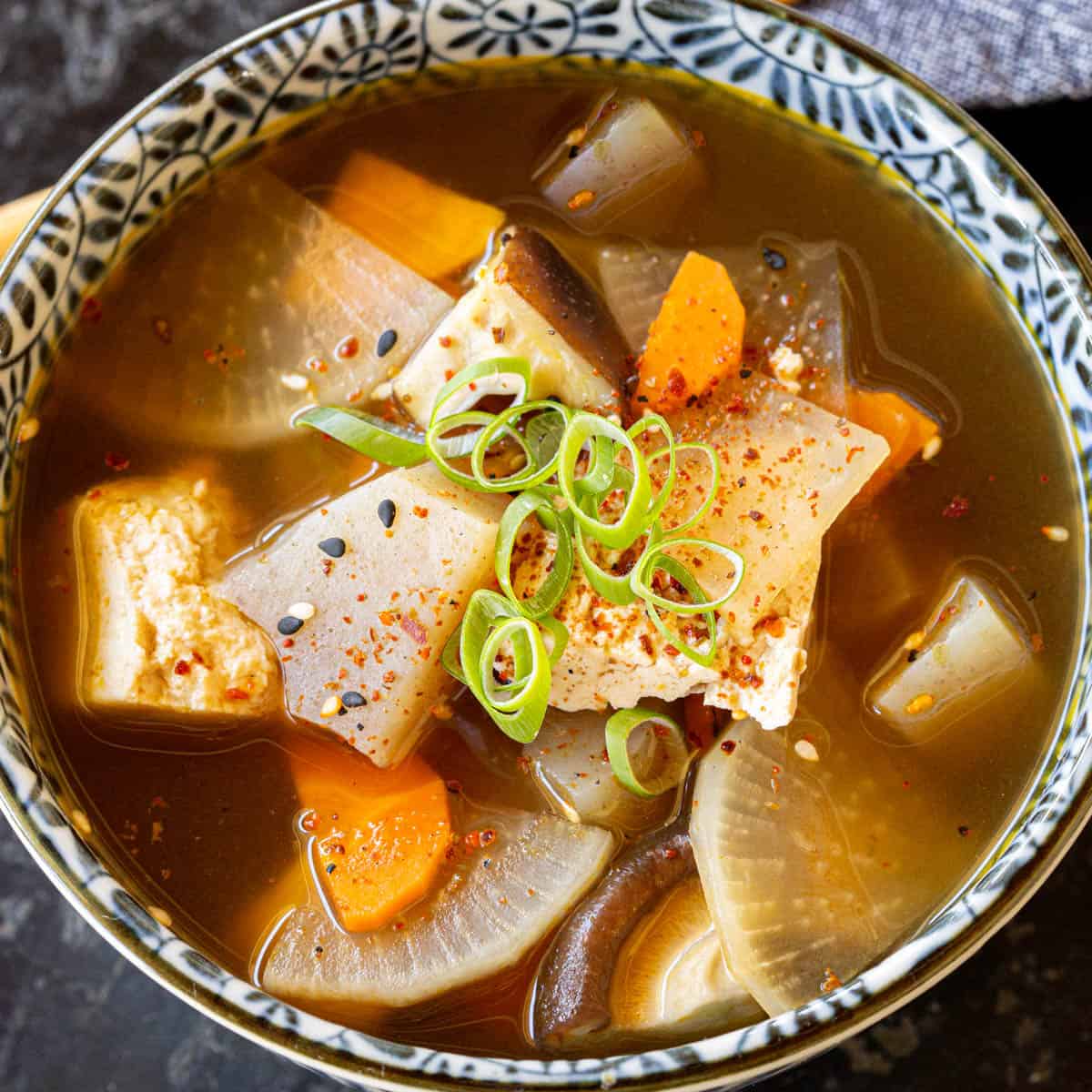



No Comments